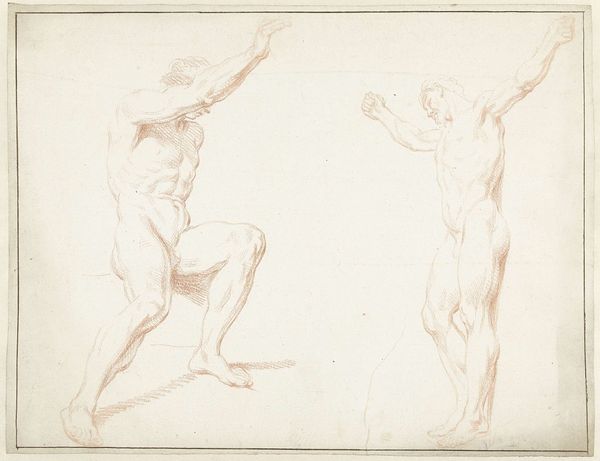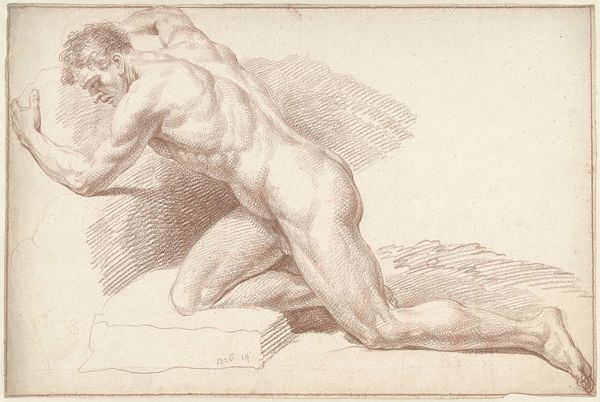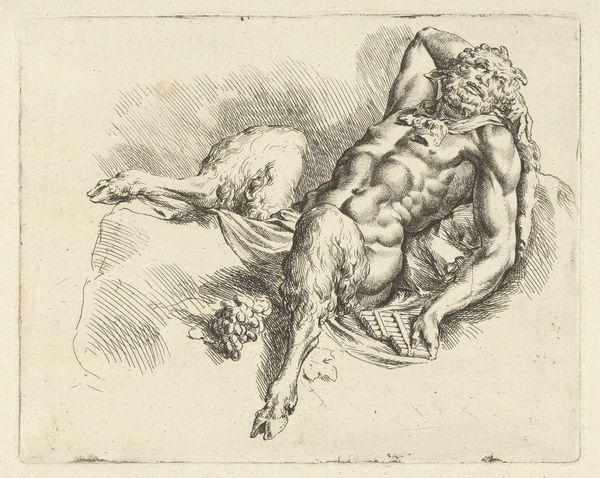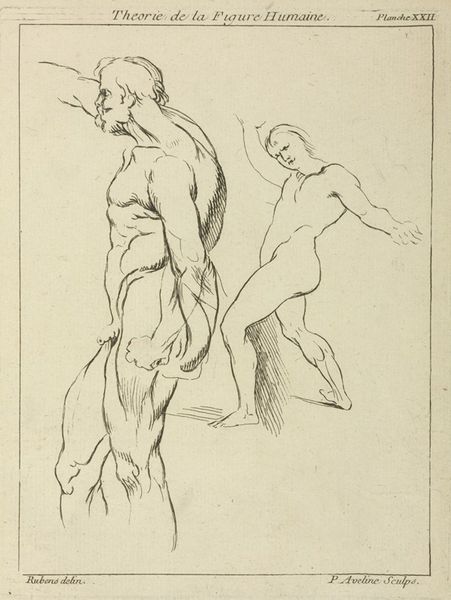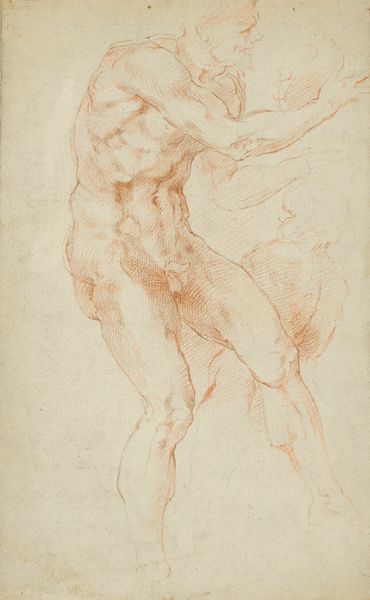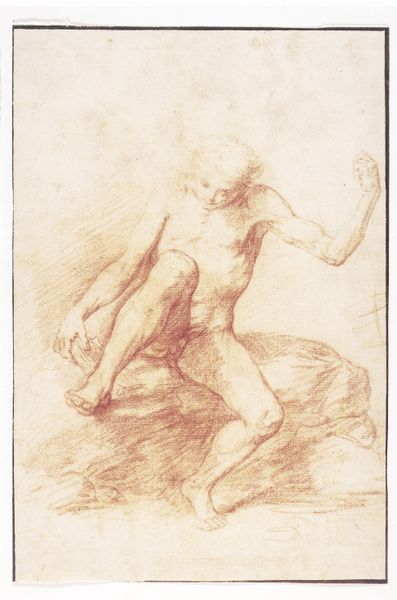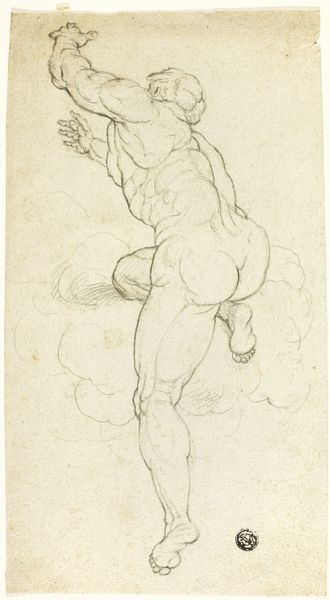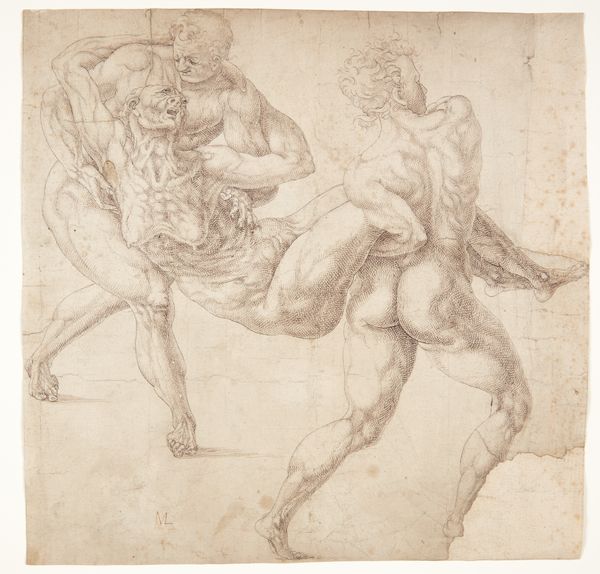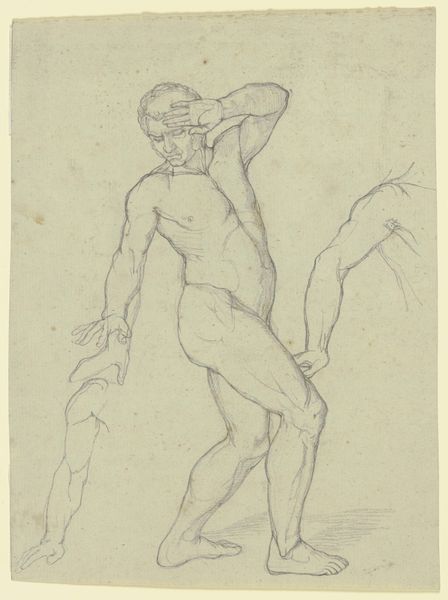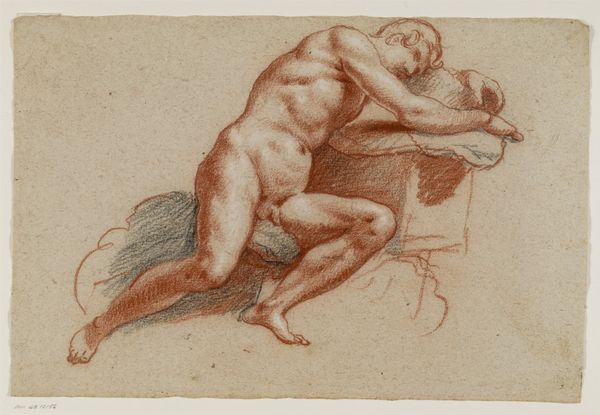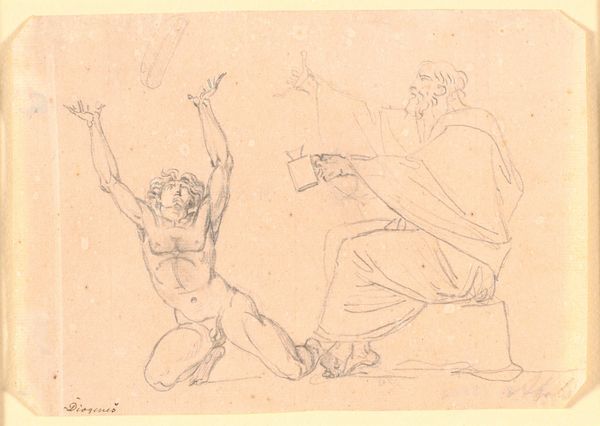
Studie van een mannelijk naakt, liggend op zijn zij 1703 - 1775
0:00
0:00
drawing, dry-media, pencil
#
drawing
#
amateur sketch
#
toned paper
#
facial expression drawing
#
light pencil work
#
pencil sketch
#
classical-realism
#
dry-media
#
pencil drawing
#
ink drawing experimentation
#
pen-ink sketch
#
pencil
#
portrait drawing
#
pencil work
#
male-nude
Dimensions: height 309 mm, width 237 mm
Copyright: Rijks Museum: Open Domain
Louis Fabritius Dubourg created this red chalk drawing on paper sometime in the 18th century. The drawing is a study of a male nude, lying on his side, and the artist has used the red chalk to great effect, creating a range of tones and textures. Notice the way Dubourg uses the chalk to create a sense of depth and volume in the figure, particularly in the muscles and contours of the body. This is achieved through the medium of earth-based pigment, combined with careful cross-hatching and blending to create the illusion of three-dimensionality on a flat surface. The choice of red chalk as a medium is significant here. It was a popular choice for figure studies during the 18th century, as its warm tones and soft texture were well-suited to capturing the nuances of human anatomy. Dubourg engaged with a well-established tradition of draftsmanship, drawing upon the techniques and conventions of academic art. But also, keep in mind that in its own way, the academic system was a mode of mass production, a factory for training artists. Paying attention to the materials and methods used by artists like Dubourg allows us to appreciate the skill and artistry involved in their work.
Comments
No comments
Be the first to comment and join the conversation on the ultimate creative platform.
